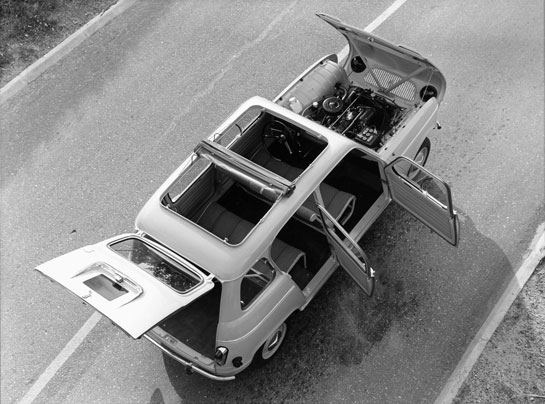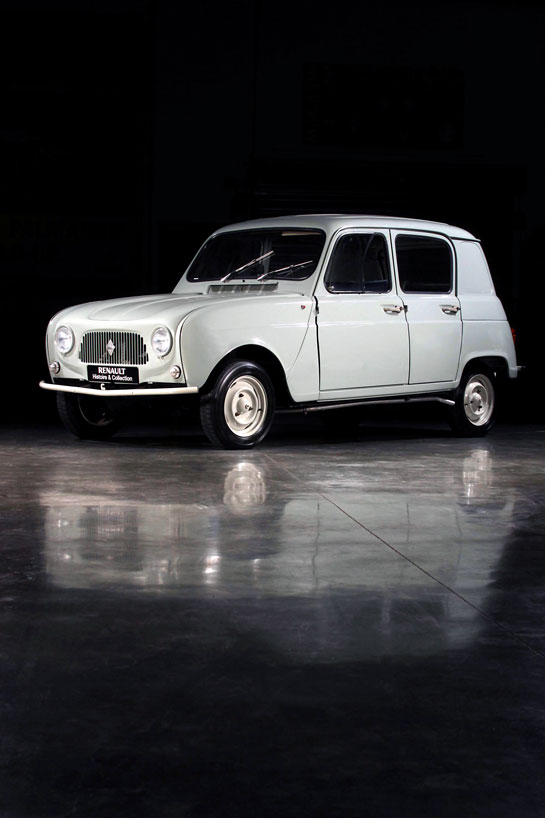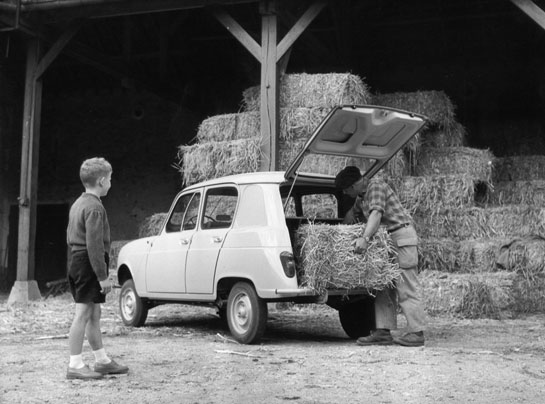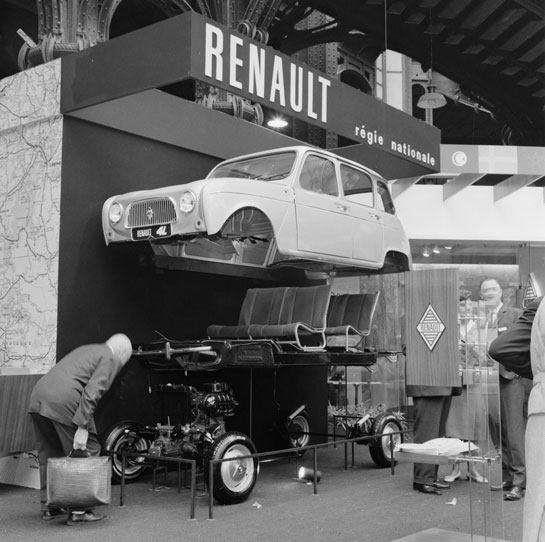1961:The R4 Takes its First Steps
Words by Roberto Motta
Photos by Renault Communications
The 4L was Renault’s first “voiture à vivre” or “livable car”. It was based on a brilliant idea: create a car that would break down the barriers assigning one function to each vehicle.
It should be a versatile car that could go anywhere, do anything and was convenient for all occasions. Pierre Dreyfus, president of the Régie Nationale des Usines Renault, called the concept a “blue jeans” car, and wanted to produce a versatile, inexpensive car with a worldwide calling which could match the changes in society that were being observed as the 1960s approached. The “blue jeans” project was launched in 1956, and in the following five years, the Renault 4 was developed into the first front-wheel drive saloon from Renault and it was presented to the press before going on display at the Paris Motor Show in October 1961.
At the same time, the Régie launched three saloon cars plus a van version: the R3 with a 603cc engine, (which was cancelled from the catalog the following year), the R4 and the R4L (the “L” for luxury) both equipped with a 747 cc four cylinder in-line. The R4 and R4L quickly found a place in the heart of the French public. Its unrivalled interior, low running costs and ability to adapt to all types of use made it an instant hit.
With the R4, Renault created the first two-box vehicle with an engine compartment and a combined cabin/boot. The interior space could be converted with the simple pushing down of the rear bench, so the owner was able to transform the family car into a van, or vice-versa, almost instantly.
Pierre Dreyfus, decided that the car would be sold at 350,000 Francs and not a centime more. To keep the costs down the designers decided to use the Dauphine’s 747cc engine and three speed gearbox and use a simple interior. Brakes were drums all around. By design, the R4 was a sturdy car that took advantage of independent torsion bar suspension with a generous travel, so that the car was drivable on dirt roads and on the new smooth highways.
The R4 used many other innovations that allowed that the car to be relatively maintenance-free. For example there were no lubrication points, and was not necessary monitor the water level because the cooling system used a new sealed cooling circuit. The closed circuit cooling system used an expansion chamber to collect the excess liquid evaporated at hot temperatures and worked as a closed circuit to prevent losses, doing away with the need for topping up. While the cars still required routine maintenance, the new R4 had announced the era of problem-free cars.
In June 1961, a long line of covered trucks carried the R4 prototypes throughout France to present the new car to the dealers in the Renault network. Such was the excitement that each time, the meeting with the dealers had to be made in a private commercial zone with security provided by the Gendarmerie! Over 3,500 brand dealers received a large dossier that explained the car in every aspect.
After all this, the Renault’s management decided on a major promotional operation, and at the same time as the presentation of the new car, 200 R4s cars were made available to motorists who wanted to test drive it. The promotion that was made in the streets of Paris was called “Take the Wheel”. It was a success with about 60,000 Parisians taking turns at the wheel to get to know the R4. Upon its introduction, Renault offered the R4 four versions (R3, R4, R4L, R4L Super Confort), that were able to adapt to any setting and any lifestyle.
Renault 4 Profile
Project launch:
• 1956.
Project name:
• Project 112.
• In-house, the project was nicknamed “350” in reference to the price listed in the brief (350,000 Francs).
First public appearances:
• Press: August 1961 in France’s Camargue region.
• General public: October 1961 at the Paris Motor Show.
Number of countries where the model was manufactured/assembled:
• 28 countries (including France).
Number of countries where the model was marketed:
• More than 100.
End of production:
• December 3, 1992, Renault announced the end of the Renault 4 in a press release; only two factories would continue to produce the Renault 4 after that date and through 1994: Morocco and Slovenia.
Total number of vehicles produced:
• Official figure: 8,135,424
• The Renault 4 is the world’s third best-selling vehicle after the Volkswagen Beetle and Ford Model T.
Read more:
https://velocetoday.com/archives/15338




The Dauphine was 845 cc., and rated at 5CV, it was the 4CV, the first of that design series, that had the 745 cc. engine, which was similar with a smaller cylinder bore. The 4 CV had wet sleeves in the bores, which could easily be replaced with the sleeves and pistons from the Dauphine.
Exploded view of an actual Renault R4.
The long travel suspension required some novel solutions to body mounting.
If an Italian had designed that car his passport would have revoked and he would have been deported to Casablanca! What a dreadful car in appearance and with a
750cc engine OMG you would have to rebuild it every 30,000 miles needed or not!
To quote them: …….”to create a car that would break down”……..!! Tom Claridge
Tom,
…all of which which makes our next feature on the R4 even more impressive; four great looking young French girls, led by a top Chanel model attempted to drive an R4L from Patagonia to Alaska in 1965. The girls are much prettier than the cars, but what an adventure. Stay tuned to see if the girls ever returned…. [Ed.]